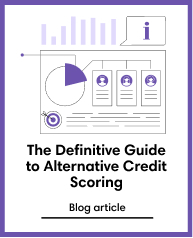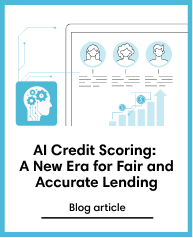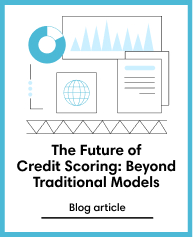Credit Scoring
Jun 18, 2019
Digital Scorecards: Redefining Credit Scoring for Improved Lending Decisions
Subscribe to our newsletter
Which customers should we extend credit to and on what terms? What is the probability of certain credit applicants defaulting? Which past due accounts are worth focusing on? The ability to answer such questions quickly and with a high degree of accuracy can produce game-changing results for lenders by improving the customer experience while reducing risks and costs.
Traditional credit scoring approaches are limited not only by time-consuming and cumbersome processes but also by their inability to score applicants with thin credit histories. With Fintechs and BigTechs moving into financial lending space and leveraging data to improve the speed and efficiency of the lending process, traditional credit scoring methods are increasingly losing relevance.
Credit scoring is ripe for a change
Unsurprisingly, lenders across the world – from startups like Petal – a New York-based Fintech and online lending marketplaces such as Rubique and Bankbazaar in India - are turning to digital credit scoring models that blend alternative data with traditional data for faster and more efficient credit scoring. Rubique and Bankbazaar, for instance, have seen a jump in customer loan approval ratio go up from 40-45% to 65% after using digital scoring. The lesson to learn: as competition intensifies and consumers leverage a variety of credit options, traditional credit scores from credit bureaus are no longer adequate in checking for fraud, reducing default risk, and boosting penetration in unexplored geographies. According to the WorldBank, less than 10% of people in low and middle-income countries are on file in public credit registries.
With consumers increasingly using smartphones and spending more time online, it only makes sense to create unique scorecard models based on their digital footprints. According to Pew research, more than 94% of adults own a mobile phone and90% use the Internet. Forward-looking lending institutions using digital footprints to authenticate credit-worthiness can not only capture customers early on in the lending cycle but also improve speed and scale in their lending processes. But how can they do this while ensuring customer privacy?
Next-gen credit scoring: Leveraging smartphone metadata
Digital scorecards can be designed to leverage smartphone metadata (after customer privacy consent and operating system’s permissions) to assess credit applications – even those that are rejected by traditional scorecards. Here are two major ways in which digital scorecards can enhance traditional scorecards used by most banks and lending institutions:
- Accurately assess borrowers for a variety of credit products:
Traditional scorecards leverage applicant’s salary information and data from sources such as credit bureaus, utility bills and telcos to assess creditworthiness. Even when all of this data is available, it is usually not enough to accurately assess borrower intent and ability to repay.
Digital scorecards use anonymised, smartphone metadata gathered from applications, calendars, emails, contact, video and audio to evaluate credit applications. The scorecards are underpinned by machine learning algorithms that analyse repayment data and behavioural patterns of delinquent applicants. As a result, they are highly predictive in assessing customers’ willingness to repay, making it easy for companies to lend to customers– even those with thin credit histories.
What’s more, digital scorecards can be customised to assess credit applicants for diverse financial products such as credit cards or unsecured lending products such as payday loans, auto loans, and Point-of-Sale and two-wheeler loans. This gives lenders more confidence in their decision-making, expands their customer base and improves financial inclusion.
- Boost customer experience:
For most consumers, credit scores are vague data points, making it difficult for them to understand the basis on which they are judged. 53% of consumers believe that alternative data sources have the ability to positively impact their credit scores. Not only that, digital scorecards can quickly analyse loan applications and generate pre-approvals immediately, enabling a differentiated and enhanced user experience with faster time-to-yes
Digital scorecards that are easy to integrate with an existing lending decision-making system are poised to offer significant traction to financial services companies, especially in developing economies. They can be run in parallel to existing scorecards to assist in lending decisions or merged with the existing scorecard to create more powerful credit scores. Alternatively, the digital score can be used as an additional characteristic in an existing scorecard. As young millennials and other customers with thin credit histories increasingly try to access credit, digital scorecards can do a better job in providing predictive insights into borrower behaviour, thereby redefining credit-decision-making.





